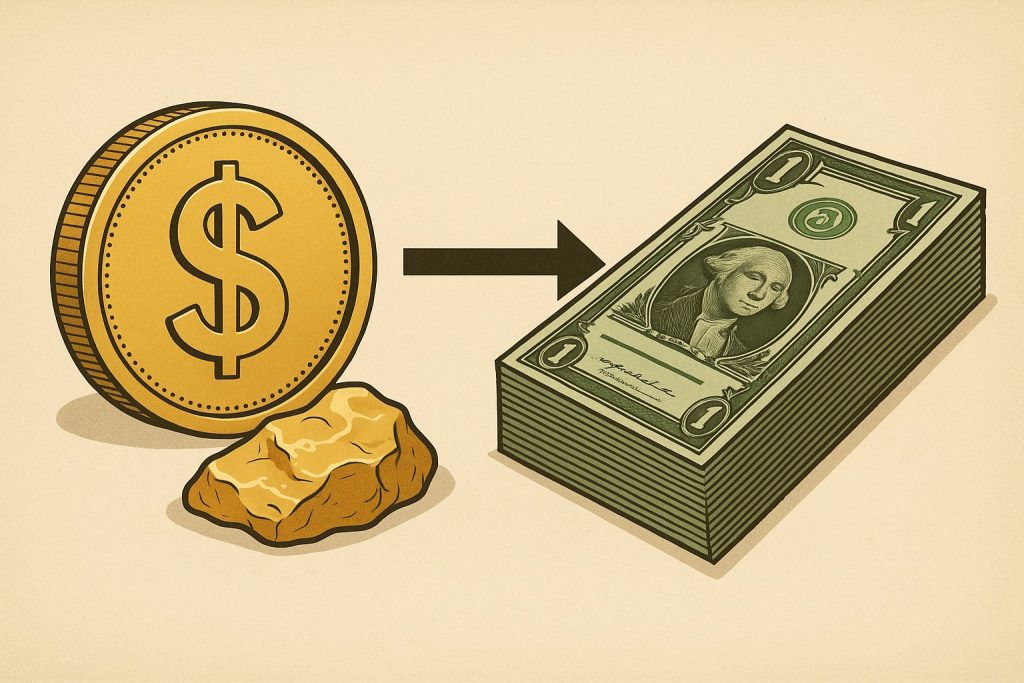Ever wonder how we went from trading shiny metal to swiping plastic and tapping phones to buy coffee?
Welcome to the long, strange journey of currency—a tale of empires, inflation, and why your dollar isn’t what it used to be.
A Brief History of Money
Once upon a time, money was real stuff. Gold. Silver. Cows, even. (Yes, cows were currency. Udderly serious.) Ancient societies bartered or used metal coins whose value came from the actual material they were made of.
Fast forward to the 20th century: the U.S. dollar was backed by gold—you could, in theory, walk into a bank and trade your dollars for actual gold. But in 1971, President Nixon ended the gold standard, and the dollar became a fiat currency—meaning its value comes not from a physical commodity, but from government decree and public trust.
In short: it’s worth what we agree it’s worth.
The Dollar’s Great Disappearing Act
Since ditching the gold standard, the dollar has been slowly losing purchasing power. Inflation quietly eats away at what your money can buy. What used to cost a dollar in 1970 costs about $7.82 today.
That’s not growth—that’s erosion.
And it’s not just inflation. Governments can (and do) print more money, especially during times of crisis—think 2008 or 2020. That can lead to devaluation, where the supply of dollars increases, but their value doesn’t.
Translation? The dollars in your wallet buy less than they did last year. Or even last month.
Why This Matters to You
If you’re just saving money, you’re actually losing it—slowly, quietly, and consistently. Every year you stash cash under your mattress (or in a low-yield savings account), inflation chips away at its power.
This is why investing is not optional. It’s essential.
Investments in assets like stocks, real estate, or even commodities can outpace inflation over time. They’re not just tools to grow your wealth—they’re shields to protect it from the silent tax that is inflation.
The Bottom Line
Money has changed. The dollar isn’t what it used to be—and it likely never will be again. But while the value of paper fades, your purchasing power doesn’t have to.
Build a portfolio. Own appreciating assets. Let your money work harder than inflation does.
As the saying goes: “Don’t just save. Invest to survive—and thrive.”
